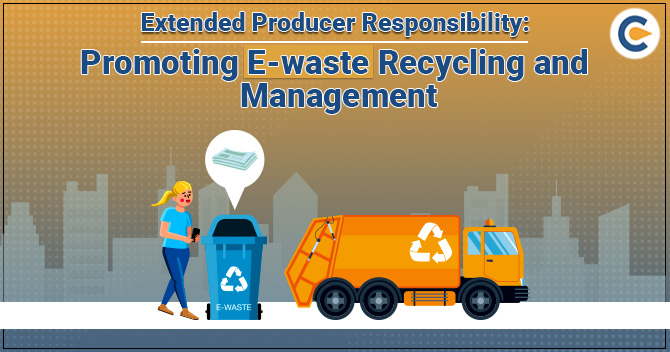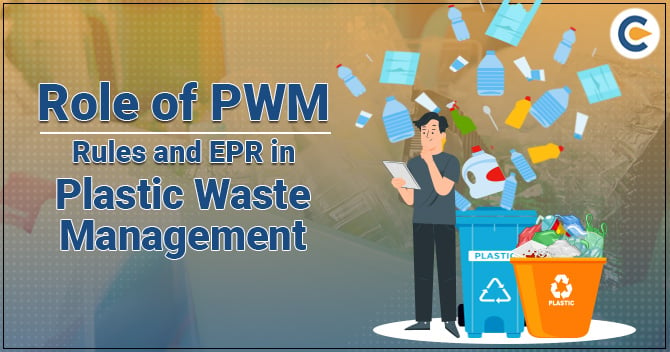E-waste is a common, informal name for electronic products getting close to the end of their “Productive life.” Dumping e-waste in dumpsite can result in hazardous emissions to the air, water, and soil and create severe health and environmental hazards. That is why the E-waste must be discarded or recycled correctly. This write-up will pen down how Extended Producer Responsibility is boosting e-waste recycling and management across key sectors in India.
What is E-Waste?
E-waste means electrical and electronic machinery like AC, refrigerators, LEDs, Washing Machines, Laptops, Desktops, Monitors, Cell phones, and their accessories are whole or in part disposed of as waste by the users or bulk users. E-waste includes electrical products rejected from manufacturing, refurbishment, and repair processes.
Nowadays, E-waste has been one of the fast-moving waste streams globally. While e-waste contains valuable materials like aluminum, copper, gold, palladium, and silver, it contains harmful substances like cadmium, lead, and mercury.
Recent statistics of E-waste in India
As per ‘ Global e-waste monitor 2020’, in 2019, approximately 53.6 million tons of electronic waste was generated worldwide, out of which only 17.4% were reprocessed. India ranks as the third most significant contributor – with 3.2 million tons of e-waste generated a year. Hence, India must seek viable solutions to boost e-waste recycling across all major sectors to curtail environmental hazards.
In December 2020, the Prime Minister spoke on the uprightness of using electronic products to the fullest, dumping old items carefully, and there need to handle the electronic waste. Also, in August 2021, he declared a ‘Waste to Wealth’ mission emphasizes utilizing waste for preferable uses. But today also, the management of e-waste in India remains troubled with ineffective implementation.
As per the report generated by the Central Pollution Control Board in 2020, India has produced 1,014,961 tons of electronic waste in 2019-2020, which is 32% higher than FY2018-2019.
It is also said that the informal sector controls more than 90% of e-waste collection and handling processes in the country. Not surprisingly, neighborhood Ragman is still the go-to source of waste collection for most people in the country.
Relativity of Extended Producer Responsibility and E-Waste Recycling and Management
Extended Producer Responsibility is a known policy tool that requires electronics makers to take financial and physical influence for managing the dumping of the electronic products after the end-user. In 2016, the rules were expanded to introduce a ‘Producer Responsibility Organization’ to help collect and recycle e-waste and bring buy-back, deposit refund, and swapping schemes under the Extended Producer Responsibility.
Under the Extended Producer Responsibility process, either the manufacturer or an authorized third party must gather the E-waste for reusing or refurbishing. An amendment to the rules introduced year-to-date collection targets for producers under the Extended Producer Responsibility.
Although this Extended Producer Responsibility mechanism has been perfectly implemented in some parts of the world, it has also provoked a debate on aspirational collection targets. Waste-collection targets in the first step of policy execution are hard to achieve because the reverse supply chain and policies are still being implemented and examined.
Also, the EPR plan requires evaluating the quantity of E-waste generated from their end-use products. The plan indicates a scheme for collection and channelization of their end-use products with the same Electrical and Electronics Engineering[1] code to authorized recyclers, approximate budget for implementing Extended Producer Responsibility, outline the policy of creating awareness, announcement on Restriction of Certain Hazardous Substances compliance, and submission of documents in this regard.
In these situations, to reflect significant results, PROs either prepare the report with a high amount of e-waste collected or no reporting at all.
Challenges faced by various Sectors related to E-Waste Recycling and Management
The formal sector is experiencing high handling, waste acquisition costs, underused capacity, and other related problems. Also, a 2020 report stated that formal-sector producers had to suffer the extra environmental, health and safety, and compliance costs.
However, the informal sector doesn’t have to bear the costs as the formal sector bears. But on the other side, its contribution to the recycling process remains primarily unnoticed, and its workers labor in unsafe conditions. Setting arbitrary yet aspiring collection targets could further endanger them in this context.
Initiatives to resolve the E-waste challenges
To resolve the e-waste, challenge the best way is to develop standard policy and implementation. Additionally, the government must set evidence-based pragmatic rather than determined goals.
This would require following the quantum of e-waste generated and the reusing capacity to process it. On the other hand, a vital shift in the policy environment is required. Mostly, the environmental policies in India are of the ‘command and control’ variety in which producers are possibly penalized if they do not meet pre-specified goals. Such policies often bring out long-term failures. We need policies of the ‘PROMISES AND THREAT’ variety – with an incentive at one end and a penal provision at the other hand.
For instance, with a view to encouraging e-waste recycling industries, the government of various countries has set up a fund that was used to subsidize the e-waste recycling process in the country. Also, the government has exhibited remarkable improvements in thee-waste recycling industry.
Conclusion
In a nutshell, with the increase in our consumption of electronic products, the amount of e-waste will also increase. So, considering the pandemic and post-pandemic standard of work from home. The current need, in sum, is to make the conversion of ‘waste to wealth’ easier while we endeavor to thoroughly understand the salient numbers of the country’s e-waste collection.
This needs to be followed by setting pragmatic targets and robust implementation of the Extended Producer Responsibility mechanism and bridging the formal and informal sectors.
Read our Article:Latest MoEFCC Notification Underpins New EPR targets for PIBOs











